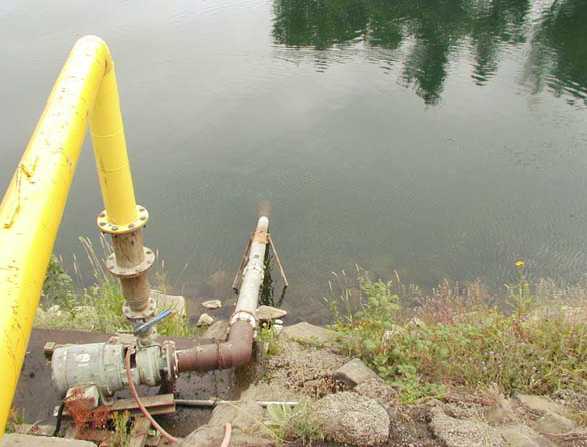Rotary Drum Screen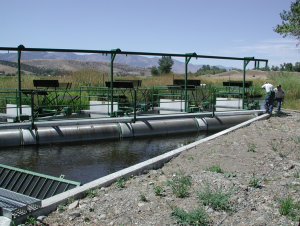
|
Advantages
- Proven fish protection
- Self-cleaning by rotation
- Passes debris downstream
|
Disadvantages
- Susceptible to direct hits from large debris
- Large civil works required
- Seals require significant maintenance
- Susceptible to abrasions by sand – mesh requires periodic replacement
- Need control to maintain submergence between 65% and 85%
|
Vertical Fixed Plate Screen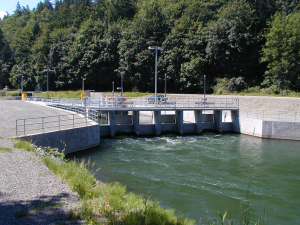
|
Advantages
- Easy to see
- Mechanically simple
- Can be installed on river’s edge – small screens
- No bypass required
- Can use profile wire
- Mechanical/brush cleaning usually effective
- Air burst cleaning system is on back side of screen
- Cleaning is started by timer or head loss
|
Disadvantages
- Must be cleaned mechanically
- Large bypass flows required
- Brush arms can be damaged by large debris
- Circular air burst cleaners do not clean entire screen
|
Vertical Traveling Screen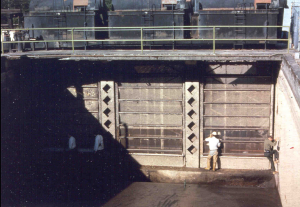
|
Advantages
- Small screens can be installed on riverbank
- Compact civil works
- Self-cleaned by rotation
- Jet sprays provide additional cleaning
|
Disadvantages
- Mechanically complex
- Seals can be a problem
- Make sure meets all NMFS criteria (old styles may not)
|
Non-Vertical Fixed Plate Screen – Coanda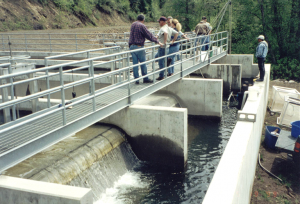
|
Advantages
- No moving parts
- No bypass required if built in-river
|
Disadvantages
- Self-cleaning may not be reliable
- Risk of fish injury/mortality on screen during low flow
- Must raise and control water surface
- Unreliable flow rate control
- Adult upstream passage concerns
- Potential issues with hydraulic gradients
|
Horizontal Screens – FCA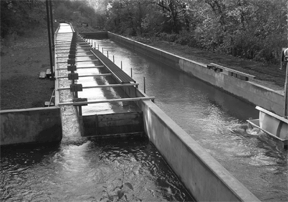
|
Eicher Screen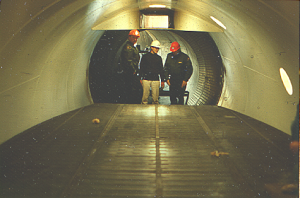
|
| Modular Inclined Screens
|
End-Of-Pipe (Pump) Intake Screens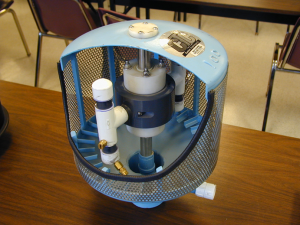
|
Fixed Cylindrical Screens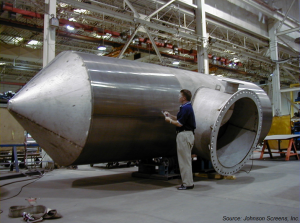
|
Advantages
- Good option for deep intakes
- Air burst cleaning system can be made to be effective
- Some off-the-shelf models with water backwash systems meet NMFS criteria for active screens
|
Disadvantages
- Out of sight, out of mind
- Need sweep velocity to transport debris from screen site
- Air burst systems on large installations don’t always clean entire screen – especially the bottom
- Long, stringy vegetation is a problem on small pump screens
|
Pump Screens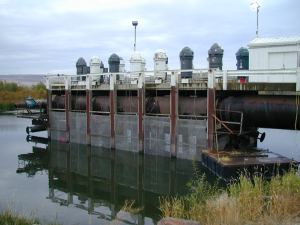
|









